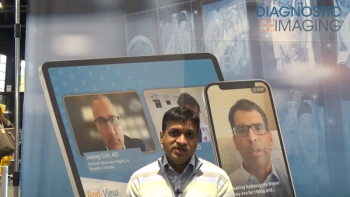Artifact Reduction Drives Technology Advances with Updated Version of Echelon Synergy MRI System
Emerging technologies included with the 10th version of the 1.5T MRI platform include Synergy DLR Clear and Synergy Vision that are geared toward mitigating common challenges with artifacts.
Fujifilm Healthcare has made artifact reduction a key focus of advances with the newly launched 10th version of the Echelon Synergy 1.5T magnetic resonance imaging (MRI) system.
Offering multiple in-bore cameras and the use of real-time tracking from scans to correct motion-compromised raw data, the
The company added that the Echelon Synergy’s inclusion of the AI-powered algorithm DLR Clear addresses the challenging truncation artifact without the need for extended scan time.
“With the v10 (Echelon Synergy), technologists can now apply our RADAR radial sequence with our iterative iRCM IP-Recon processing to mitigate spike artifacts, resulting in clear, high-quality images with reduced motion artifact,” noted Shawn Etheridge, the executive director of modality solutions for Fujifilm Healthcare Americas Corporation.
Fujifilm noted that the upgraded standard software features with version 10 of the Echelon Synergy 1.5T MRI will be provided to current customers free of charge.
Newsletter
Stay at the forefront of radiology with the Diagnostic Imaging newsletter, delivering the latest news, clinical insights, and imaging advancements for today’s radiologists.




























